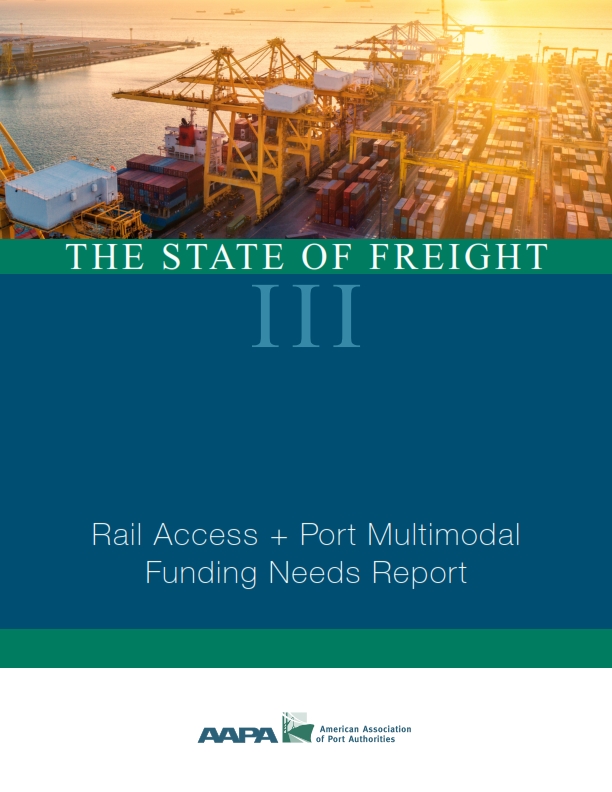News Release
FOR RELEASE - May 16, 2018
Contact: Aaron Ellis, Public Affairs Director, aellis@aapa-ports.org
(703) 684-5700
American Association of Port Authorities
Phone: (202) 792-4033
www.aapa-ports.org
 |
In a just-released report, U.S. port authorities identified more than $20 billion in projected multimodal port and rail access needs over the next decade, while one-third cited pressing rail project needs costing at least $50 million for each of their ports. Sixty-seven percent said that funding and financing options are the biggest obstacles in getting essential rail projects started to access their facilities. Furthermore, 37 percent said that problematic at-grade rail crossings or height-restricted overpasses and tunnels near their ports are constraining cargo-handling capacity while 36 percent reported that land acquisition is a big problem in developing and planning port rail access projects.
These are the top-line results from an American Association of Port Authorities (AAPA) survey announced today, titled The State of Freight III. This is the third report in as many years conducted by the unified and collective voice of America’s seaports that focuses on the needs of ports to effectively move goods into and out of their facilities by land and water.
AAPA President and CEO Kurt Nagle remarked: “In State of Freight III, we take a deep-dive into the freight transportation needs of our U.S. member port authorities, with an emphasis on rail access. The findings show that while the FAST (Fixing America’s Surface Transportation) Act has been essential in providing the building blocks for a national freight program, more must be done to ensure that multimodal goods movement projects have adequate resources to produce efficient and timely results. These transportation projects are crucial to address our nation’s increasing freight volumes and enhance America’s international competitiveness.”
As a key component of America’s supply chain and a major facilitator for trade, seaports rely on a host of transportation modes and nodes, including roads, rails, waterways, tunnels and overpasses, to move large volumes of cargo, which may be headed to, or originating from, manufacturing, distribution, assembly and processing centers that support economic growth and millions of U.S. jobs.
“Our nation’s ports have identified a vast array of projects which are ready for investment and could move forward if the issues in this report could be addressed,” said Mr. Nagle. “It’s important that steps be taken to resolve the barriers identified in this report that are preventing these projects from progressing.”
About AAPA
Founded in 1912 and recognized as the unified voice of seaports in the Americas, AAPA today represents 140 of the leading seaport authorities in the United States, Canada, Latin America and the Caribbean and more than 250 sustaining and associate members, firms and individuals with an interest in seaports. According to IHS Markit’s World Trade Service, combined international sea trade moving through Western Hemisphere ports in 2016 totaled 3.49 billion metric tons in volume and US$3.01 trillion in value. Of that total, ports in Central and South America handled 1.71 billion metric tons of cargo valued at US$941 billion, while North American ports handled 1.79 billion metric tons of goods, valued at US$2.07 trillion. To meet the growing demand for trade, the AAPA and its members are committed to keeping seaports navigable, secure and sustainable. For more information, visit www.aapa-ports.org. On Twitter: http://twitter.com/AAPA_Seaports